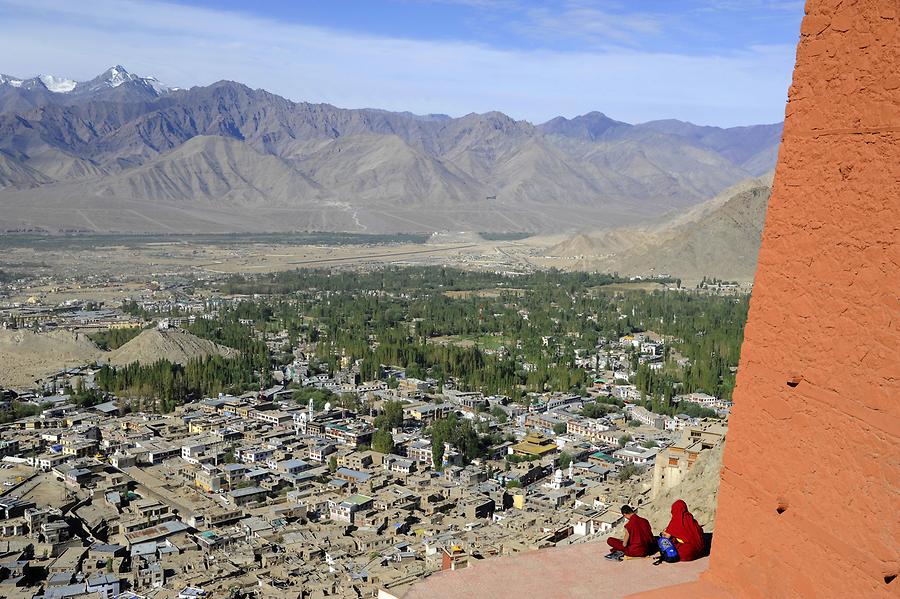Leh - Panoramic View#

Leh - Panoramic View, August 2011, © Gerhard Huber, under CC BY-NC 4.0 +Edu
Im 17. Jahrhundert machte König Sengge Namgyal das kleine Dorf Leh
Leh, India
zu seiner Hauptstadt. Der aufblühende Handel führte zu einem ständigen Bevölkerungswachstum. Heute leben fast 30.000 Menschen im gar nicht mehr so verschlafenen Leh, das sich längst zur quirligen Touristenmetropole entwickelt hat. Über viele Jahrhunderte hindurch blieb das Stadtbild von Leh nahezu unverändert. Am Schnittpunkt wichtiger Karawanenwege war die kleine Handelsmetropole schon seit jeher ein Treffpunkt für die Völker des westlichen Himalaya. Tibeter brachten Tee und Salz aus Lhasa und tauschten sie gegen feine Tücher der Nomaden und die kostbaren Brokatstoffe der Inder.
Den besten Überblick genießt man von einem kleinen Tempel südlich des Stadtzentrums.
In the 17th century, King Sengge Namgyal made the small village of Leh
Leh, India
his capital. The flourishing trade led to constant population growth. Today, almost 30,000 people live in Leh, which is no longer that sleepy, and has long since developed into a bustling tourist metropolis. For many centuries, the cityscape of Leh remained almost unchanged. At the intersection of important caravan routes, the small trading metropolis has always been a meeting place for the peoples of the western Himalayas. Tibetans brought tea and salt from Lhasa and exchanged them for fine clothes of the nomads and the precious brocades of the Indians.
The best view you can catch from a small temple south of the city center.